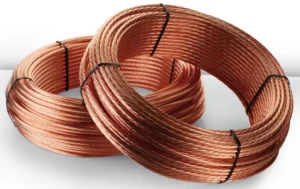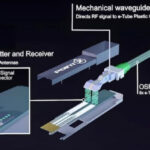Bare copper wire — also known as uninsulated copper wire — is one of the most versatile and widely used conductors in electrical systems. Because it offers excellent conductivity, corrosion resistance, and durability, it serves many essential functions in residential, commercial, and industrial applications. Below are the main uses and benefits of bare copper wire.

What Is Bare Copper Wire Used For
1. Grounding and Earthing
The most common use of bare copper wire is for grounding (earthing). Grounding provides a safe path for electrical current to return to the earth in case of a fault or short circuit, protecting both equipment and people from electrical shock.
Typical grounding applications include:
Connecting grounding rods to electrical service panels
Bonding metal water pipes or other conductive systems
Providing equipment grounding in electrical installations
Serving as part of lightning protection systems
Because the grounding wire doesn’t carry current under normal operation, it doesn’t need insulation. Its bare form allows easy bonding with metal surfaces and grounding electrodes.
2. Grounding Conductor Inside Cables
Bare copper is also commonly found inside multi-conductor electrical cables as the grounding conductor. For example:
Romex/NM (nonmetallic sheathed) cable — the bare copper wire runs alongside the insulated hot and neutral wires.
UF (underground feeder) cable — designed for direct burial, includes a bare copper ground wire inside the outer jacket.
In both cases, the bare copper ensures a reliable ground connection throughout the circuit.
3. Overhead Utility Lines
Bare copper wire can sometimes be used as a neutral conductor in overhead utility distribution lines. Its high conductivity and weather resistance make it suitable for open-air applications. However, aluminum or ACSR conductors are more common for high-voltage transmission due to cost and weight considerations.
4. Grounding Grid and Substation Applications
In industrial facilities, substations, and power plants, bare copper wire is used to create grounding grids or earth mats. These grids distribute fault currents safely into the ground and help maintain stable ground potential across large electrical installations. The durability and corrosion resistance of copper make it ideal for long-term underground use.
5. Example: Well Pump Wiring
If you are wiring a well pump or other outdoor electrical equipment, you’ll also need a bare copper grounding wire as part of the setup. For a typical 240V pump:
Two insulated hot wires (black and red)
One insulated neutral wire (white), if required
One bare or green insulated ground wire
When using UF cable, the bare copper ground is already included within the cable’s sheath, simplifying installation.
Why Bare Copper Wire Doesn’t Need Insulation
Unlike hot or neutral conductors, the bare ground wire doesn’t carry current during normal operation. It only conducts electricity in the event of a fault, short circuit, or lightning strike — safely directing the current to the ground. Therefore, insulation isn’t necessary, and the bare design allows for better grounding contact and easier installation.
Conclusion
Bare copper wire plays a critical role in grounding, safety, and reliability across all types of electrical systems. Whether used in home wiring, substations, or utility networks, it ensures safe operation by providing a dependable path to ground. Its unmatched conductivity, corrosion resistance, and longevity make it the preferred choice for grounding and bonding applications.
Need high-quality bare copper wire for your project?
TOT Wire & Cable offers a wide range of copper conductors for grounding, power, and industrial applications — all with competitive pricing and dependable quality.
👉 Contact us today to learn more or request a quote.





